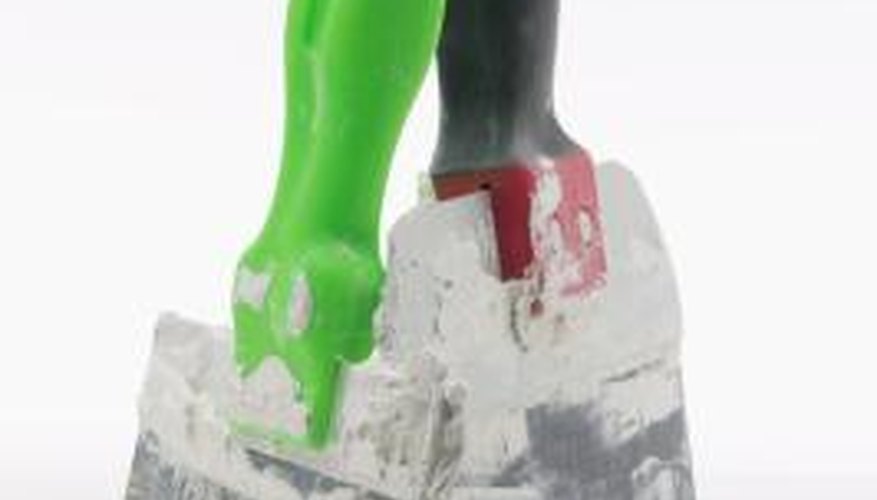Vinyl wallpaper is often used in high-traffic areas such as bathrooms and kitchens. It withstands repetitive cleanings and moderate moisture better than other wallpaper types. Due to the heaviness of the material, be sure to purchase wallpaper paste manufactured for vinyl wallpaper. Clear vinyl wallpaper paste will work for wallpaper applied to painted walls. However, if you are wallpapering over existing vinyl wallpaper, be sure to use a vinyl on vinyl wallpaper paste.
- Vinyl wallpaper is often used in high-traffic areas such as bathrooms and kitchens.
- Due to the heaviness of the material, be sure to purchase wallpaper paste manufactured for vinyl wallpaper.
Draw a vertical plumb line using a level and pencil on the dominant wall in the room. This line will mark the edge of the first piece of wallpaper you apply, so be sure that the line allows you to centre the first piece on the wall in a manner that is aesthetically pleasing.
Unroll a section of wallpaper that is 6 to 8 inches longer than necessary. Cut the wallpaper with a utility blade and apply wallpaper paste to the back side of the wallpaper with a brush.
Fold the wallpaper so the ends meet in the centre of the piece and the wallpaper paste is sandwiched together. Allow the piece of wallpaper to rest for three to five minutes while the paste activates before continuing. You can cut and fold several pieces of wallpaper at a time to make the job go quicker.
- Unroll a section of wallpaper that is 6 to 8 inches longer than necessary.
- Fold the wallpaper so the ends meet in the centre of the piece and the wallpaper paste is sandwiched together.
Unfold the top part of the wallpaper strip and fix it to the wall using light pressure from your hand. Make sure that the vertical edge of the paper is aligned with the plumb line. A small amount of wallpaper, about 2 to 3 inches, should extend past the wall and towards the ceiling.
Unfold the bottom part of the wallpaper strip and smooth it all the way down. Use a wallpaper smoother remove any air bubbles and permanently bond the wallpaper to the wall. A damp sponge can be used to remove any paste on the wallpaper.
Trim the horizontal edges of the wallpaper using a utility knife. A 6-inch paint scraper can be used to create a straight line and protect the wallpaper on the wall as you trim it with the utility knife.
- Unfold the bottom part of the wallpaper strip and smooth it all the way down.
- A 6-inch paint scraper can be used to create a straight line and protect the wallpaper on the wall as you trim it with the utility knife.
Apply the next section of wallpaper, overlapping the edges as necessary to make sure that the pattern lines up with the section on the wall. Fix the wallpaper to the wall using the same technique you used to apply the first piece.
Continue applying the wallpaper until the room is completely covered. Use the level periodically to check and make sure that the pieces of wallpaper are still being hung vertically. Adjust and reposition as necessary as you apply the pieces.
TIP
If you don't have any experience hanging wallpaper, try to choose a small pattern that you can match easily. Large patterns can require considerable skill to match correctly. If you hang wallpaper around obstructions such as doors and windows, trim the wallpaper using the same technique used to trim around baseboards.
WARNING
Booking refers to the process of folding the wallpaper before applying it to the wall. When booking, be sure not to crease the wallpaper, just allow it to naturally fold over and meet in the centre.
